Events
| Name | organizer | Where |
|---|---|---|
| MBCC “Doing Business with Mongolia seminar and Christmas Receptiom” Dec 10. 2025 London UK | MBCCI | London UK Goodman LLC |
NEWS

Mongolia begins vaccinating people aged 18 to 49 www.news.mn
From today (5 April), Mongolia begun vaccinating people aged between 18 and 49 in Ulaanbaatar – in other words, the bulk of the workforce. The Government is aiming for all citizens in Ulaanbaatar to receive the first dose of the COVID-19 vaccine by 1 May and the rest of the population by 1 June.
The country of three million started the nationwide vaccination rollout on 23 February. The early stage of vaccination focused on target groups such as elderly people, medical workers and those with chronic diseases. So far, 60 percent of Mongolians aged above 50 have already received first dose of the vaccine.
As of today (5 April), Mongolia has vaccinated over 360 thousand people above the age of 18. The coronavirus vaccination rollout is ongoing.
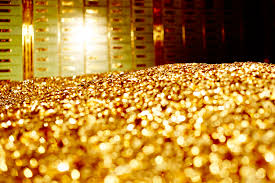
BoM purchases 917 kg precious metals in March www.montsame.mn
In March 2021, the Bank of Mongolia (BoM) purchased 917 kg precious metals. Thus, total amount of precious metals' purchase has reached 2.9 tons since the beginning of this year, showing a decrease of 2.4 tons compared to the same period of previous year.
The BoM branches in Darkhan-Uul and Bayankhongor aimag bought 27.5 kg and 35.5 kg of precious metals respectively in March.
The average price of BoM’s purchase of 1 gram of gold was MNT 157,543.30 in March.
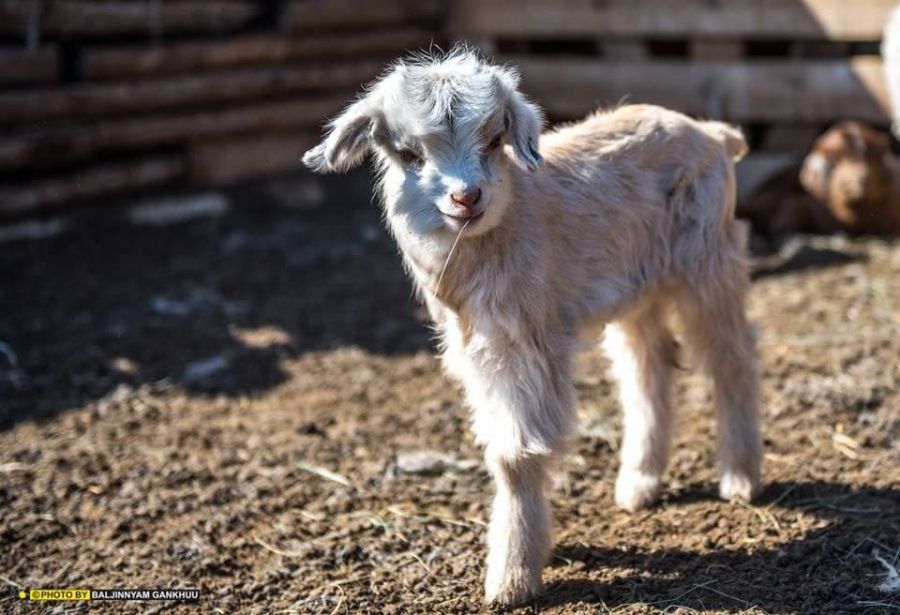
5.1 million livestock offspring being cared nationwide www.montsame.mn
As of April 1, 5.2 million dams (22 percent of total 24 million) have delivered offspring. 14.8 thousand of the dams are camels, 23.8 thousand - mares, 102 thousand – cows, 2.8 million - ewes, and 2.3 million - goats.
With 2.2 million livestock offspring delivered nationwide, the survival rate is currently at 98 percent.
The offspring delivery rate is the highest (63 percent) in Khovd aimag followed by Bayan-Ulgii aimag (56 percent) and Uvs aimag (53 percent).
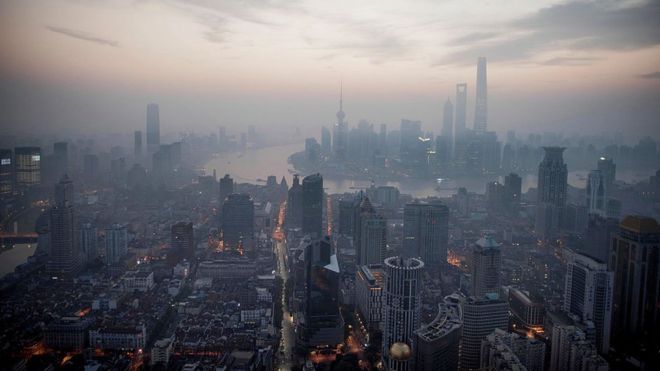
China mulls new bourse to lure overseas-listed firms www.rt.com
Beijing is exploring options to establish a new stock exchange that targets firms listed overseas and could bolster the global status of its onshore share markets, Reuters reported, citing sources.
According to people with knowledge of the matter, the country’s State Council has asked the top securities regulator to lead studies on how to design the exchange that would target Chinese firms listed in offshore markets.
The government hopes the initiative would also lure marquee international firms such as Apple and Tesla, which would have the option of carving out local businesses and listing them on the new bourse, one of the sources said.
Talks are in the early stages, and a timeframe and location are yet to be decided, said the sources, who declined to be identified. One option under discussion is upgrading an existing listing platform such as a smaller bourse in Beijing, they added.
China has two major onshore exchanges, in Shanghai and Shenzhen, with combined listed market capitalization of 78.7 trillion yuan ($12 trillion).
The plan to set up a new bourse comes as the United States’ securities regulator made legal amendments last week that would expel Chinese companies from US exchanges if they did not comply with the country’s auditing standards.
Data by Refinitiv showed that about 13 US-listed Chinese firms, including the Alibaba Group, Baidu and JD.com have conducted secondary listings worth a combined $36 billion in Hong Kong over the past 16 months.
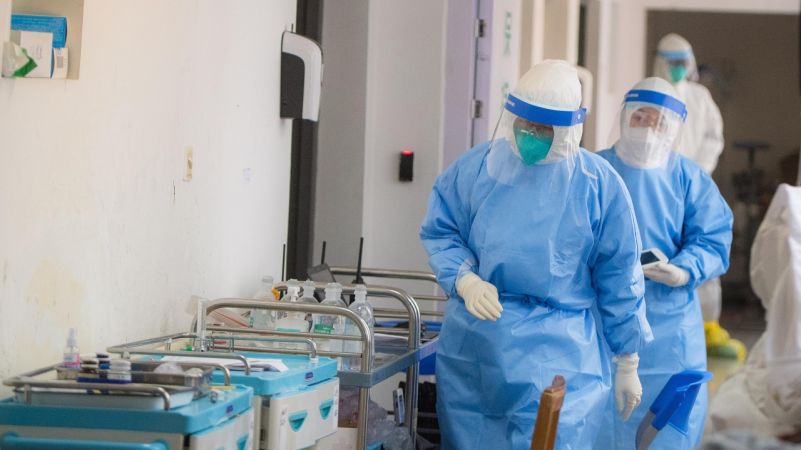
Mongolia records highest daily COVID-19 count, total surpasses 10,000 www.xinhuanet.com
Mongolia's COVID-19 tally rose to 10,218 on Sunday after 620 new cases, the highest daily count since the pandemic hit the country, were reported nationwide in the past 24 hours, the National Center for Communicable Diseases (NCCD) said.
The total recoveries in the country rose to 5,649 after 270 more patients were discharged from hospitals in the last 24 hours.
The disease has claimed 15 lives in Mongolia since the country confirmed its first case in March 2020.
The Asian country launched a national vaccination campaign in late February, with the aim of vaccinating at least 60 percent of its 3.3 million population. More than 346,000 people have been vaccinated so far.

Australia enjoys Easter with no new local coronavirus cases www.reuters.com
MELBOURNE (Reuters) - Australians were celebrating Easter Sunday in a relatively unrestricted manner as the country reported no new locally acquired coronavirus cases.
Queensland, the epicentre of a recent, small COVID-19 community outbreak, has had only one infection in the past three days. The state has the tightest restrictions on public gatherings.
Elsewhere, Australians flocked to the beaches, capitalising on the warm weather in many parts of the country, or gathered with families, in a stark contrast to last year’s Easter when a nationwide lockdown kept people confined to their homes.
While many countries have imposed fresh lockdowns or curtailed services for the major Christian holiday trying to keep the third wave of coronavirus from further spreading, Australia’s churches were open and many were attending services during the four-day weekend.
Christianity is the dominant religion in Australia, with 12 million people, and 86% of religious Australians, identifying as Christians, according to the 2016 census.
Australia has been one of the world’s most successful countries in curbing the pandemic, with snap lockdowns, border closures and swift tracking limiting coronavirus infections to just over 29,300 infections, with 909 COVID-19 deaths.
The country has had much less, however, with its inoculation drive, missing a March target by about 3.3 million doses as states and the federal government bickered over the blame.
Health Minister Greg Hunt said on Sunday that the country is on track to give a first dose of the vaccine to all Australians who want it by October.
“As the supply has increased with the sovereign vaccine manufacturing, so has the rollout,” he said.
CSL Ltd. began production of 50 million doses of the University of Oxford/AstraZeneca vaccine in March in Melbourne, with most Australians expected to receive that shot.
Reporting by Lidia Kelly; Editing by William Mallard

Presidential decree issued on recall of Ambassador to U.S. www.montsame.mn
On the basis of the Section 1.5, Article 33 of the Constitution, Section 3, Article 14 of the Law on the President, and Section 1, Article 16 of the Law on Diplomatic Service, President of Mongolia Khaltmaagiin Battulga issued a decree on recalling Yo.Otgonbayar, the Ambassador Extraordinary and Plenipotentiary of Mongolia to the United States of America.
In regard to the issuance of the presidential decree, Chief of Staff of the President’s Office U.Shijir sent an official letter to Minister of Foreign Affairs B.Battsetseg, requesting to expedite the required actions.
Source: The Office of the President of Mongolia
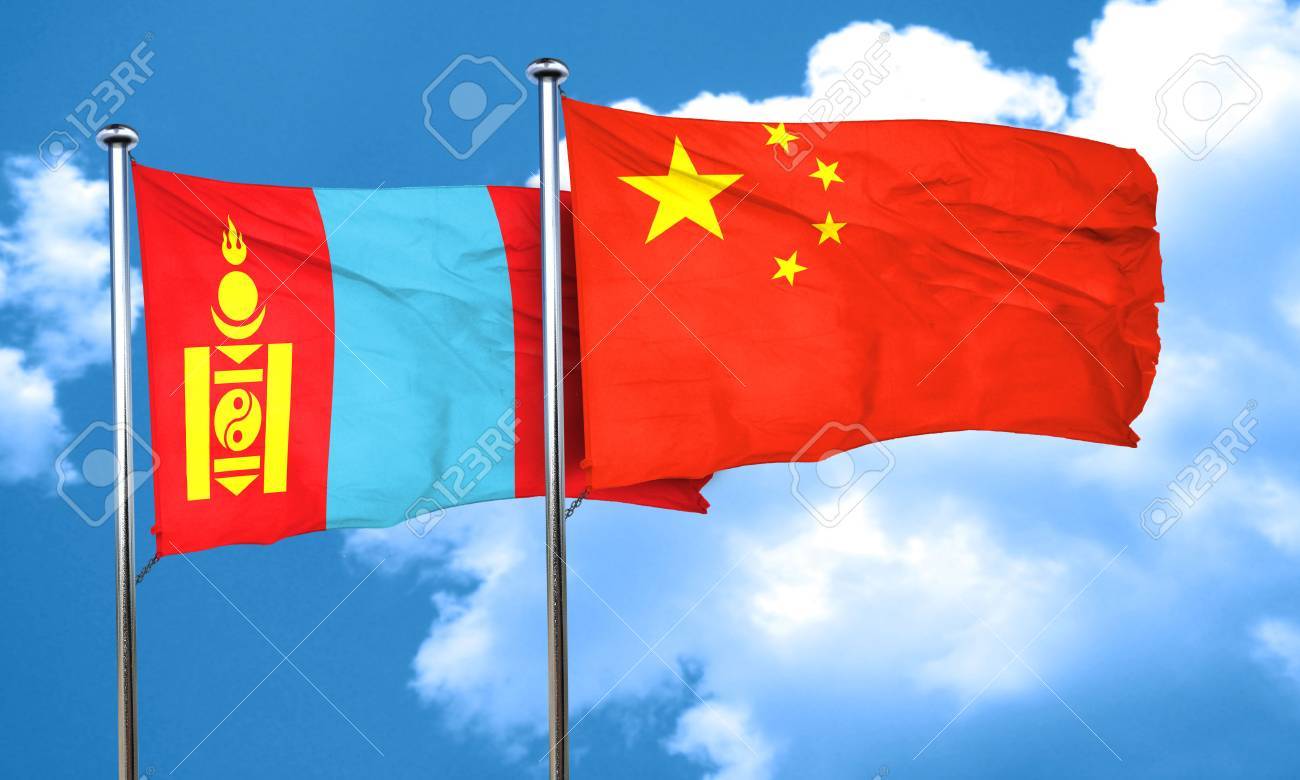
First batch of COVID-19 vaccines purchased from China arrives in Mongolia www.global.chinadaily.com.cn
Mongolia on Friday received the first batch of COVID-19 vaccines it has purchased from China as part of the efforts to curb the spread of the COVID-19 pandemic.
Speaking at the handover ceremony of the 300,000 doses of vaccines, Chinese Ambassador to Mongolia Chai Wenrui said that Mongolia is one of the first receivers of COVID-19 vaccine from China within the framework of both donation and procurement. This shows that China and Mongolia have traditionally friendly relations that help each other and overcome difficulties together, said Chai.
"Since the start of the COVID-19 outbreak, Mongolia and China have provided each other with material and emotional support, and overcome difficulties together," Mongolian Foreign Minister Batmunkh Battsetseg said at the ceremony.
"Vaccine is considered to be the most effective way to fight the pandemic. I would like to express my sincere gratitude to relevant Chinese government organizations for coordinating vaccine procurement and donating vaccines," she added.
Mongolia launched a COVID-19 vaccination campaign across the country on Feb. 23, and more than 323,600 people have been vaccinated so far, according to the country's health ministry.
The country plans to vaccinate at least 60 percent of its 3.3 million people using four types of COVID-19 vaccines, and 20 percent will be vaccinated under COVAX, a global initiative for equitable access to COVID-19 vaccines, said the ministry.
In February, Mongolia received 300,000 doses of China-donated vaccines.
So far, Mongolia has registered more than 9,300 COVID-19 cases, with 14 deaths.
In recent days, more than 300 infections have been reported on a daily basis in Mongolia, mostly in the capital Ulan Bator, home to over half of the country's total population.
Domestic transmissions of the virus have been reported in the capital city and 16 of all 21 provinces of the country.
It is estimated that about 60 percent of the country's total population is at high risk of infection.
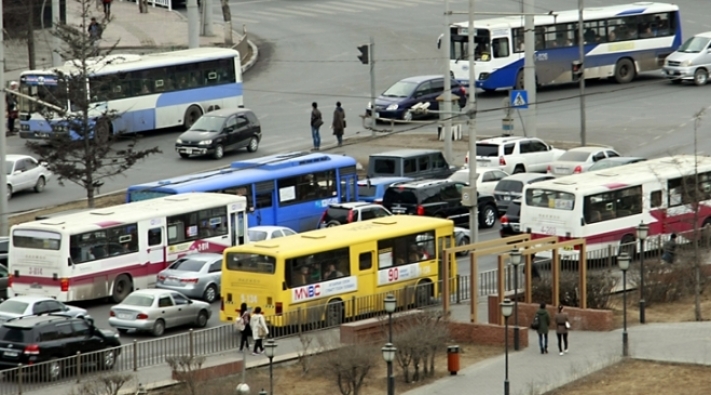
Prime Minister orders to make public transport reforms www.montsame.mn
On April 2, Prime Minister L.Oyun-Erdene became acquainted with the operations of the companies engaged in public transportation services in Ulaanbaatar city and gave orders to corresponding officials regarding the pressing issues and COVID-19 safety precautions.
Statistics show that there are a total of 1,822 vehicles of public transport services, including 1,148 buses, 48 trolleybuses, 17 stretch buses, 46 mid-sized buses, and 59 mini-sized buses, and 503 taxis, registered in the database of public transportation of Ulaanbaatar, and 960 of them are operating daily along the public transport routes.
PM Oyun-Erdene highlighted that as the risk of coronavirus spreading on public transport remains high, strict sterilization and disinfection measures must be adhered to in public vehicles until the vaccination program is completed.
He ordered state-owned enterprises to deploy their buses for public transportation starting April 5, Monday, during peak traffic periods of the day to improve the accessibility of public transport services and help allowing social distancing inside buses. “However, these measures should be taken without imposing an additional financial burden on the companies,” the PM noted.
During today’s working trip to the public transportation companies, B.Odsuren, Ulaanbaatar city’s Mayor Deputy introduced about the indispensable and immediate need to update vehicles of public transportation since over 60 percent of total vehicles traveling on road are more than 10 years old. According to officials of Ulaanbaatar city, 45 percent of 524 trolleybuses are to be eliminated from public transport services this year due to the retirement age set for the vehicles, and 247 of them are vehicles of Ulaanbaatar city-owned companies.
At the end of his trip, PM Oyun-Erdene gave an order to the Ministry of Road and Transport Development and Ulaanbaatar city departments and companies responsible for the public transport management and operations to conduct a general study and report back to the cabinet within 30 days.
Minister of Road and Transport L.Khaltar, Minister of Finance B.Javkhlan, and Mayor of Ulaanbaatar city D.Sumiyabazar were also charged to evaluate possibilities to make a comprehensive update to the public transport vehicles and have a unified system for public transport management.
In addition, the Prime Minister highlighted that the MNT 356 billion of the total payment collected from Oyu Tolgoi LLC under the Mongolian Tax Authority’s Tax Act has been transferred to the capital city’s budget and the money could be invested for the public transport reforms.

336,758 people get first dose of COVID-19 vaccine www.montsame.mn
Prime Minister L.Oyun-Erdene, Deputy Minister S.Amarsaikhan, Minister of Health S.Enkhbold and WHO Representative to Mongolia Dr Sergey Diorditsa visited vaccination units in Chingeltei and Songinokhairkhan districts today. As of 2 April 2021, Mongolia has vaccinated 336,758 people and has established 80 vaccination units in the capital city to scale up the national vaccine rollout.
Starting from today, older adults and people with disabilities will be vaccinated at the vaccination unit located at the Vocational training center in Chingeltei District. Dr Sergey Diorditsa commended that the given center is prioritizing vaccination of older adults at high risk of infection and severe illness from COVID-19.
Prime Minister L.Oyun-Erdene reminded all, specifically addressing young adults, to continue protective measures such as wearing a mask, observing physical distancing, washing hands regularly, and encouraged all to stay vigilant to overcome the pandemic with minimal loss.
Source: WHO Mongolia
...
- «
- 1
- 2
- 3
- 4
- 5
- 6
- 7
- 8
- 9
- 10
- 11
- 12
- 13
- 14
- 15
- 16
- 17
- 18
- 19
- 20
- 21
- 22
- 23
- 24
- 25
- 26
- 27
- 28
- 29
- 30
- 31
- 32
- 33
- 34
- 35
- 36
- 37
- 38
- 39
- 40
- 41
- 42
- 43
- 44
- 45
- 46
- 47
- 48
- 49
- 50
- 51
- 52
- 53
- 54
- 55
- 56
- 57
- 58
- 59
- 60
- 61
- 62
- 63
- 64
- 65
- 66
- 67
- 68
- 69
- 70
- 71
- 72
- 73
- 74
- 75
- 76
- 77
- 78
- 79
- 80
- 81
- 82
- 83
- 84
- 85
- 86
- 87
- 88
- 89
- 90
- 91
- 92
- 93
- 94
- 95
- 96
- 97
- 98
- 99
- 100
- 101
- 102
- 103
- 104
- 105
- 106
- 107
- 108
- 109
- 110
- 111
- 112
- 113
- 114
- 115
- 116
- 117
- 118
- 119
- 120
- 121
- 122
- 123
- 124
- 125
- 126
- 127
- 128
- 129
- 130
- 131
- 132
- 133
- 134
- 135
- 136
- 137
- 138
- 139
- 140
- 141
- 142
- 143
- 144
- 145
- 146
- 147
- 148
- 149
- 150
- 151
- 152
- 153
- 154
- 155
- 156
- 157
- 158
- 159
- 160
- 161
- 162
- 163
- 164
- 165
- 166
- 167
- 168
- 169
- 170
- 171
- 172
- 173
- 174
- 175
- 176
- 177
- 178
- 179
- 180
- 181
- 182
- 183
- 184
- 185
- 186
- 187
- 188
- 189
- 190
- 191
- 192
- 193
- 194
- 195
- 196
- 197
- 198
- 199
- 200
- 201
- 202
- 203
- 204
- 205
- 206
- 207
- 208
- 209
- 210
- 211
- 212
- 213
- 214
- 215
- 216
- 217
- 218
- 219
- 220
- 221
- 222
- 223
- 224
- 225
- 226
- 227
- 228
- 229
- 230
- 231
- 232
- 233
- 234
- 235
- 236
- 237
- 238
- 239
- 240
- 241
- 242
- 243
- 244
- 245
- 246
- 247
- 248
- 249
- 250
- 251
- 252
- 253
- 254
- 255
- 256
- 257
- 258
- 259
- 260
- 261
- 262
- 263
- 264
- 265
- 266
- 267
- 268
- 269
- 270
- 271
- 272
- 273
- 274
- 275
- 276
- 277
- 278
- 279
- 280
- 281
- 282
- 283
- 284
- 285
- 286
- 287
- 288
- 289
- 290
- 291
- 292
- 293
- 294
- 295
- 296
- 297
- 298
- 299
- 300
- 301
- 302
- 303
- 304
- 305
- 306
- 307
- 308
- 309
- 310
- 311
- 312
- 313
- 314
- 315
- 316
- 317
- 318
- 319
- 320
- 321
- 322
- 323
- 324
- 325
- 326
- 327
- 328
- 329
- 330
- 331
- 332
- 333
- 334
- 335
- 336
- 337
- 338
- 339
- 340
- 341
- 342
- 343
- 344
- 345
- 346
- 347
- 348
- 349
- 350
- 351
- 352
- 353
- 354
- 355
- 356
- 357
- 358
- 359
- 360
- 361
- 362
- 363
- 364
- 365
- 366
- 367
- 368
- 369
- 370
- 371
- 372
- 373
- 374
- 375
- 376
- 377
- 378
- 379
- 380
- 381
- 382
- 383
- 384
- 385
- 386
- 387
- 388
- 389
- 390
- 391
- 392
- 393
- 394
- 395
- 396
- 397
- 398
- 399
- 400
- 401
- 402
- 403
- 404
- 405
- 406
- 407
- 408
- 409
- 410
- 411
- 412
- 413
- 414
- 415
- 416
- 417
- 418
- 419
- 420
- 421
- 422
- 423
- 424
- 425
- 426
- 427
- 428
- 429
- 430
- 431
- 432
- 433
- 434
- 435
- 436
- 437
- 438
- 439
- 440
- 441
- 442
- 443
- 444
- 445
- 446
- 447
- 448
- 449
- 450
- 451
- 452
- 453
- 454
- 455
- 456
- 457
- 458
- 459
- 460
- 461
- 462
- 463
- 464
- 465
- 466
- 467
- 468
- 469
- 470
- 471
- 472
- 473
- 474
- 475
- 476
- 477
- 478
- 479
- 480
- 481
- 482
- 483
- 484
- 485
- 486
- 487
- 488
- 489
- 490
- 491
- 492
- 493
- 494
- 495
- 496
- 497
- 498
- 499
- 500
- 501
- 502
- 503
- 504
- 505
- 506
- 507
- 508
- 509
- 510
- 511
- 512
- 513
- 514
- 515
- 516
- 517
- 518
- 519
- 520
- 521
- 522
- 523
- 524
- 525
- 526
- 527
- 528
- 529
- 530
- 531
- 532
- 533
- 534
- 535
- 536
- 537
- 538
- 539
- 540
- 541
- 542
- 543
- 544
- 545
- 546
- 547
- 548
- 549
- 550
- 551
- 552
- 553
- 554
- 555
- 556
- 557
- 558
- 559
- 560
- 561
- 562
- 563
- 564
- 565
- 566
- 567
- 568
- 569
- 570
- 571
- 572
- 573
- 574
- 575
- 576
- 577
- 578
- 579
- 580
- 581
- 582
- 583
- 584
- 585
- 586
- 587
- 588
- 589
- 590
- 591
- 592
- 593
- 594
- 595
- 596
- 597
- 598
- 599
- 600
- 601
- 602
- 603
- 604
- 605
- 606
- 607
- 608
- 609
- 610
- 611
- 612
- 613
- 614
- 615
- 616
- 617
- 618
- 619
- 620
- 621
- 622
- 623
- 624
- 625
- 626
- 627
- 628
- 629
- 630
- 631
- 632
- 633
- 634
- 635
- 636
- 637
- 638
- 639
- 640
- 641
- 642
- 643
- 644
- 645
- 646
- 647
- 648
- 649
- 650
- 651
- 652
- 653
- 654
- 655
- 656
- 657
- 658
- 659
- 660
- 661
- 662
- 663
- 664
- 665
- 666
- 667
- 668
- 669
- 670
- 671
- 672
- 673
- 674
- 675
- 676
- 677
- 678
- 679
- 680
- 681
- 682
- 683
- 684
- 685
- 686
- 687
- 688
- 689
- 690
- 691
- 692
- 693
- 694
- 695
- 696
- 697
- 698
- 699
- 700
- 701
- 702
- 703
- 704
- 705
- 706
- 707
- 708
- 709
- 710
- 711
- 712
- 713
- 714
- 715
- 716
- 717
- 718
- 719
- 720
- 721
- 722
- 723
- 724
- 725
- 726
- 727
- 728
- 729
- 730
- 731
- 732
- 733
- 734
- 735
- 736
- 737
- 738
- 739
- 740
- 741
- 742
- 743
- 744
- 745
- 746
- 747
- 748
- 749
- 750
- 751
- 752
- 753
- 754
- 755
- 756
- 757
- 758
- 759
- 760
- 761
- 762
- 763
- 764
- 765
- 766
- 767
- 768
- 769
- 770
- 771
- 772
- 773
- 774
- 775
- 776
- 777
- 778
- 779
- 780
- 781
- 782
- 783
- 784
- 785
- 786
- 787
- 788
- 789
- 790
- 791
- 792
- 793
- 794
- 795
- 796
- 797
- 798
- 799
- 800
- 801
- 802
- 803
- 804
- 805
- 806
- 807
- 808
- 809
- 810
- 811
- 812
- 813
- 814
- 815
- 816
- 817
- 818
- 819
- 820
- 821
- 822
- 823
- 824
- 825
- 826
- 827
- 828
- 829
- 830
- 831
- 832
- 833
- 834
- 835
- 836
- 837
- 838
- 839
- 840
- 841
- 842
- 843
- 844
- 845
- 846
- 847
- 848
- 849
- 850
- 851
- 852
- 853
- 854
- 855
- 856
- 857
- 858
- 859
- 860
- 861
- 862
- 863
- 864
- 865
- 866
- 867
- 868
- 869
- 870
- 871
- 872
- 873
- 874
- 875
- 876
- 877
- 878
- 879
- 880
- 881
- 882
- 883
- 884
- 885
- 886
- 887
- 888
- 889
- 890
- 891
- 892
- 893
- 894
- 895
- 896
- 897
- 898
- 899
- 900
- 901
- 902
- 903
- 904
- 905
- 906
- 907
- 908
- 909
- 910
- 911
- 912
- 913
- 914
- 915
- 916
- 917
- 918
- 919
- 920
- 921
- 922
- 923
- 924
- 925
- 926
- 927
- 928
- 929
- 930
- 931
- 932
- 933
- 934
- 935
- 936
- 937
- 938
- 939
- 940
- 941
- 942
- 943
- 944
- 945
- 946
- 947
- 948
- 949
- 950
- 951
- 952
- 953
- 954
- 955
- 956
- 957
- 958
- 959
- 960
- 961
- 962
- 963
- 964
- 965
- 966
- 967
- 968
- 969
- 970
- 971
- 972
- 973
- 974
- 975
- 976
- 977
- 978
- 979
- 980
- 981
- 982
- 983
- 984
- 985
- 986
- 987
- 988
- 989
- 990
- 991
- 992
- 993
- 994
- 995
- 996
- 997
- 998
- 999
- 1000
- 1001
- 1002
- 1003
- 1004
- 1005
- 1006
- 1007
- 1008
- 1009
- 1010
- 1011
- 1012
- 1013
- 1014
- 1015
- 1016
- 1017
- 1018
- 1019
- 1020
- 1021
- 1022
- 1023
- 1024
- 1025
- 1026
- 1027
- 1028
- 1029
- 1030
- 1031
- 1032
- 1033
- 1034
- 1035
- 1036
- 1037
- 1038
- 1039
- 1040
- 1041
- 1042
- 1043
- 1044
- 1045
- 1046
- 1047
- 1048
- 1049
- 1050
- 1051
- 1052
- 1053
- 1054
- 1055
- 1056
- 1057
- 1058
- 1059
- 1060
- 1061
- 1062
- 1063
- 1064
- 1065
- 1066
- 1067
- 1068
- 1069
- 1070
- 1071
- 1072
- 1073
- 1074
- 1075
- 1076
- 1077
- 1078
- 1079
- 1080
- 1081
- 1082
- 1083
- 1084
- 1085
- 1086
- 1087
- 1088
- 1089
- 1090
- 1091
- 1092
- 1093
- 1094
- 1095
- 1096
- 1097
- 1098
- 1099
- 1100
- 1101
- 1102
- 1103
- 1104
- 1105
- 1106
- 1107
- 1108
- 1109
- 1110
- 1111
- 1112
- 1113
- 1114
- 1115
- 1116
- 1117
- 1118
- 1119
- 1120
- 1121
- 1122
- 1123
- 1124
- 1125
- 1126
- 1127
- 1128
- 1129
- 1130
- 1131
- 1132
- 1133
- 1134
- 1135
- 1136
- 1137
- 1138
- 1139
- 1140
- 1141
- 1142
- 1143
- 1144
- 1145
- 1146
- 1147
- 1148
- 1149
- 1150
- 1151
- 1152
- 1153
- 1154
- 1155
- 1156
- 1157
- 1158
- 1159
- 1160
- 1161
- 1162
- 1163
- 1164
- 1165
- 1166
- 1167
- 1168
- 1169
- 1170
- 1171
- 1172
- 1173
- 1174
- 1175
- 1176
- 1177
- 1178
- 1179
- 1180
- 1181
- 1182
- 1183
- 1184
- 1185
- 1186
- 1187
- 1188
- 1189
- 1190
- 1191
- 1192
- 1193
- 1194
- 1195
- 1196
- 1197
- 1198
- 1199
- 1200
- 1201
- 1202
- 1203
- 1204
- 1205
- 1206
- 1207
- 1208
- 1209
- 1210
- 1211
- 1212
- 1213
- 1214
- 1215
- 1216
- 1217
- 1218
- 1219
- 1220
- 1221
- 1222
- 1223
- 1224
- 1225
- 1226
- 1227
- 1228
- 1229
- 1230
- 1231
- 1232
- 1233
- 1234
- 1235
- 1236
- 1237
- 1238
- 1239
- 1240
- 1241
- 1242
- 1243
- 1244
- 1245
- 1246
- 1247
- 1248
- 1249
- 1250
- 1251
- 1252
- 1253
- 1254
- 1255
- 1256
- 1257
- 1258
- 1259
- 1260
- 1261
- 1262
- 1263
- 1264
- 1265
- 1266
- 1267
- 1268
- 1269
- 1270
- 1271
- 1272
- 1273
- 1274
- 1275
- 1276
- 1277
- 1278
- 1279
- 1280
- 1281
- 1282
- 1283
- 1284
- 1285
- 1286
- 1287
- 1288
- 1289
- 1290
- 1291
- 1292
- 1293
- 1294
- 1295
- 1296
- 1297
- 1298
- 1299
- 1300
- 1301
- 1302
- 1303
- 1304
- 1305
- 1306
- 1307
- 1308
- 1309
- 1310
- 1311
- 1312
- 1313
- 1314
- 1315
- 1316
- 1317
- 1318
- 1319
- 1320
- 1321
- 1322
- 1323
- 1324
- 1325
- 1326
- 1327
- 1328
- 1329
- 1330
- 1331
- 1332
- 1333
- 1334
- 1335
- 1336
- 1337
- 1338
- 1339
- 1340
- 1341
- 1342
- 1343
- 1344
- 1345
- 1346
- 1347
- 1348
- 1349
- 1350
- 1351
- 1352
- 1353
- 1354
- 1355
- 1356
- 1357
- 1358
- 1359
- 1360
- 1361
- 1362
- 1363
- 1364
- 1365
- 1366
- 1367
- 1368
- 1369
- 1370
- 1371
- 1372
- 1373
- 1374
- 1375
- 1376
- 1377
- 1378
- 1379
- 1380
- 1381
- 1382
- 1383
- 1384
- 1385
- 1386
- 1387
- 1388
- 1389
- 1390
- 1391
- 1392
- 1393
- 1394
- 1395
- 1396
- 1397
- 1398
- 1399
- 1400
- 1401
- 1402
- 1403
- 1404
- 1405
- 1406
- 1407
- 1408
- 1409
- 1410
- 1411
- 1412
- 1413
- 1414
- 1415
- 1416
- 1417
- 1418
- 1419
- 1420
- 1421
- 1422
- 1423
- 1424
- 1425
- 1426
- 1427
- 1428
- 1429
- 1430
- 1431
- 1432
- 1433
- 1434
- 1435
- 1436
- 1437
- 1438
- 1439
- 1440
- 1441
- 1442
- 1443
- 1444
- 1445
- 1446
- 1447
- 1448
- 1449
- 1450
- 1451
- 1452
- 1453
- 1454
- 1455
- 1456
- 1457
- 1458
- 1459
- 1460
- 1461
- 1462
- 1463
- 1464
- 1465
- 1466
- 1467
- 1468
- 1469
- 1470
- 1471
- 1472
- 1473
- 1474
- 1475
- 1476
- 1477
- 1478
- 1479
- 1480
- 1481
- 1482
- 1483
- 1484
- 1485
- 1486
- 1487
- 1488
- 1489
- 1490
- 1491
- 1492
- 1493
- 1494
- 1495
- 1496
- 1497
- 1498
- 1499
- 1500
- 1501
- 1502
- 1503
- 1504
- 1505
- 1506
- 1507
- 1508
- 1509
- 1510
- 1511
- 1512
- 1513
- 1514
- 1515
- 1516
- 1517
- 1518
- 1519
- 1520
- 1521
- 1522
- 1523
- 1524
- 1525
- 1526
- 1527
- 1528
- 1529
- 1530
- 1531
- 1532
- 1533
- 1534
- 1535
- 1536
- 1537
- 1538
- 1539
- 1540
- 1541
- 1542
- 1543
- 1544
- 1545
- 1546
- 1547
- 1548
- 1549
- 1550
- 1551
- 1552
- 1553
- 1554
- 1555
- 1556
- 1557
- 1558
- 1559
- 1560
- 1561
- 1562
- 1563
- 1564
- 1565
- 1566
- 1567
- 1568
- 1569
- 1570
- 1571
- 1572
- 1573
- 1574
- 1575
- 1576
- 1577
- 1578
- 1579
- 1580
- 1581
- 1582
- 1583
- 1584
- 1585
- 1586
- 1587
- 1588
- 1589
- 1590
- 1591
- 1592
- 1593
- 1594
- 1595
- 1596
- 1597
- 1598
- 1599
- 1600
- 1601
- 1602
- 1603
- 1604
- 1605
- 1606
- 1607
- 1608
- 1609
- 1610
- 1611
- 1612
- 1613
- 1614
- 1615
- 1616
- 1617
- 1618
- 1619
- 1620
- 1621
- 1622
- 1623
- 1624
- 1625
- 1626
- 1627
- 1628
- 1629
- 1630
- 1631
- 1632
- 1633
- 1634
- 1635
- 1636
- 1637
- 1638
- 1639
- 1640
- 1641
- 1642
- 1643
- 1644
- 1645
- 1646
- 1647
- 1648
- 1649
- 1650
- 1651
- 1652
- 1653
- 1654
- 1655
- 1656
- 1657
- 1658
- 1659
- 1660
- 1661
- 1662
- 1663
- 1664
- 1665
- 1666
- 1667
- 1668
- 1669
- 1670
- 1671
- 1672
- 1673
- 1674
- 1675
- 1676
- 1677
- 1678
- 1679
- 1680
- 1681
- 1682
- 1683
- 1684
- 1685
- 1686
- 1687
- 1688
- 1689
- 1690
- 1691
- 1692
- 1693
- 1694
- »







